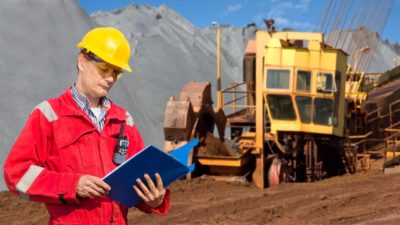The COVID-19 pandemic has upended the airline industry, halting international and domestic travel. Despite this, one aviation services stock has increased in value by more than 200% since March.
Alliance Aviation Services Ltd (ASX: AQZ) generates income by providing contract, charter and allied aviation services to the mining, energy, tourism and government sectors, both locally and internationally. It is one of the few aviation companies that delivered a profit before tax of $47.7 million in FY20 (+24.1% compared to the previous year).
In recent weeks, the airline industry has been in survival mode. Listed companies such as Air New Zealand Limited (ASX: AIZ) and Cathay Pacific Airways Ltd are being placed under scrutiny. However, while the aviation industry faces unprecedented challenges, long-term investors have enjoyed a 5-year investment return of more than 470% in the Alliance Aviation share price.
Let's take a closer look at Alliance Aviation.
Strong return on capital employed
Return on capital employed (ROCE) is one of the most popular metrics used to assess how well a capital intensive company is generating profit from its capital. The formula for ROCE is:
Earnings before interest and tax (EBIT) divided by capital employed = ROCE.
(Capital employed is the difference between total assets and current liabilities)
Using this formula, Alliance's ROCE is $43.4 million/($435.9 million − $70.8 million) = 11.9 cents (based on its FY20 results presentation). This means for every $1 of worth of capital deployed by Alliance Aviation, the company was able to earn 11.9 cents in profit as of June 2020.
On the other hand, Cathay Pacific has a ROCE of −HKD10,913 million (equivalent to −A$1,978 million) /HKD143,455 million (equivalent to A$26,001 million) = −7.6 cents (data sourced from the Hong Kong Stock Exchange as of 22 Oct 2020)
Air New Zealand's ROCE is −$87 million/($391 million − $44 million) = −25.1 cents (data sourced from FY20 annual financial results).
So, Alliance Aviation's ROCE is 11.9 cents per capital dollar, versus −7.6 cents per capital dollar for Cathay Pacific, and −25.1 cents per capital dollar for Air New Zealand.
The calculations above show that Cathay Pacific and Air New Zealand are larger businesses than Alliance Aviation in terms of EBIT. However, when using the ROCE metric, investors can see that Alliance Aviation is generating profit more efficiently from its capital than the other two.
Reliance on the commodities industry
In addition to the ROCE, Alliance Aviation's total FY20 revenue grew to $298.2 million, (+7.8% compared to FY19). It also recorded a strong cash flow of $98.8 million (+929.2% compared to FY19). The growth is due to an increase in additional flights from its clients and the equity raising for fleet expansion.
Unlike other aviation and airport businesses, Alliance Aviation has provided aviation services to mainly iron ore, gold, copper and uranium sectors, with the commodities industry representing 53% of its total contract value in FY20.
I think the earnings outlook of Alliance Aviation remains positive in the near term. Based on data released by the Department of Industry, Science, Energy and Resources (DISER) in March, Australia has a resources and energy export market of $299 billion in 2020, which I think Alliance Aviation looks to be well positioned to benefit from.
Foolish takeaway
From a financial perspective, Alliance Aviation has a relatively strong industry ROCE. It means that the company has been utilising its capital well amid the pandemic.
Even though the aviation industry is currently facing acute danger, I'd argue that Alliance's most valuable assets are its strong business fundamentals, which have contributed to the Alliance Aviation's impressive share price return over the past 5 years.









